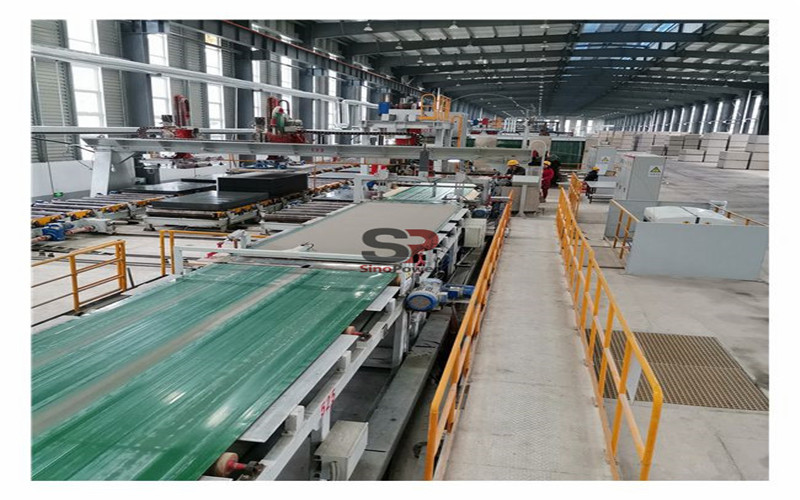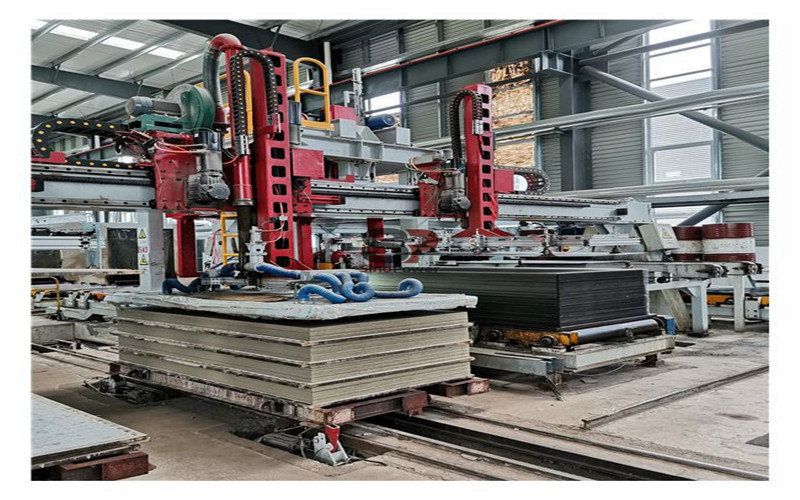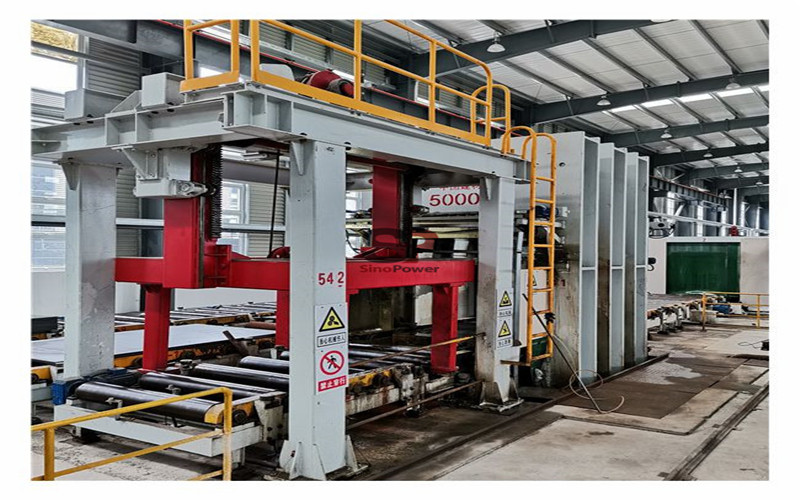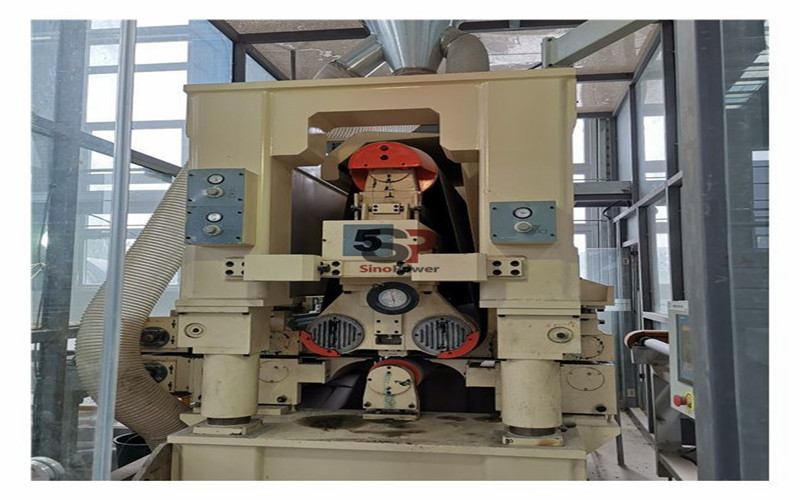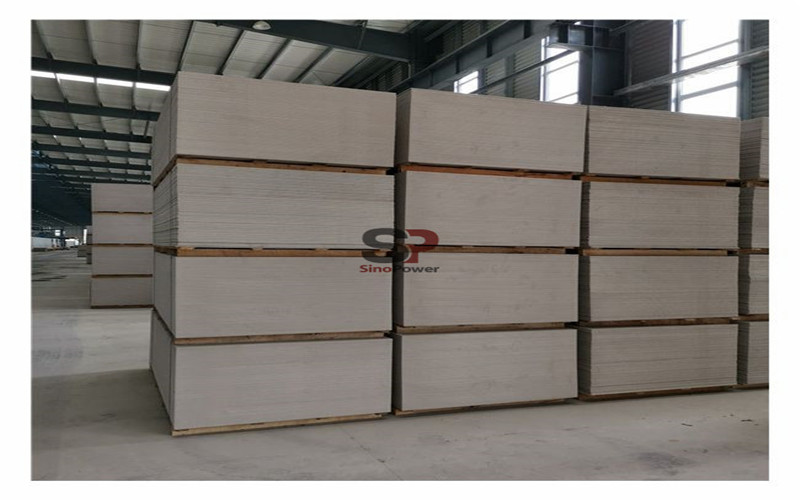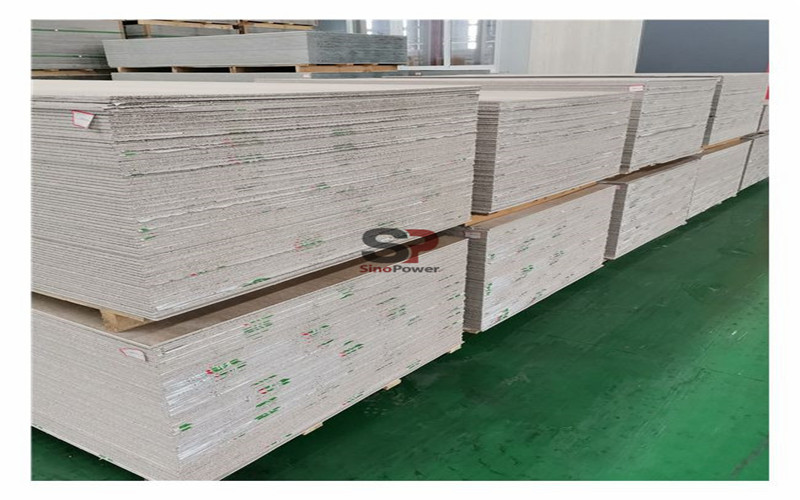With the acceleration of construction industrialization and residential industrialization, the domestic demand for fiber cement board / calcium silicate board is increasing day by day. At present, the fiber cement board / calcium silicate board produced in China has increased from 36 production lines in 2005 to about 200. The production capacity has reached about 1 billion square meters from 22.61 million square meters. With the increase of industrial capacity, the waste of production line is increasing day by day. The main waste of the production line is the sanding powder from the sanding section. A production line will produce about 2700 tons of sanding powder a year. Sanding powder is the dust produced when the surface of fiber cement board / calcium silicate board is polished by sanding machine. The dust particle is fine and belongs to construction waste. So it can not be dumped or landfilled at will. Because the sanding powder mainly comes from fiber cement board / calcium silicate board. Its main composition is the same as that of fiber cement board / calcium silicate board, which is tobermorite and quartz sand, and also contains a small amount of fiber. Sanding powder is mainly inorganic non-metallic material. So it can be used as the material of fiber cement board / calcium silicate board.
At present, there are a lot of researches on the sanding powder in medium (high) density fiberboard. This kind of board is mainly wood-based panel. It is a kind of man-made board which is made from small-diameter log cutting, processing residue and non wood plant fiber raw materials after slicing, cooking, fiber separation, drying, adding urea formaldehyde resin or other suitable adhesives, and then hot pressing. The main composition of the sanding powder of this kind of plate is organic matter, which can be reused in the production line in a small amount. But it may lead to the increase of sizing amount. At present, it is mainly used as fuel.
There are few reports about the reuse of the sanding powder produced by the fiber cement board / calcium silicate board production line. Fujian Sanming new building materials General Factory added ≤ 10% sanding powder into the production of calcium silicate board, and found that it would not affect the quality of the products. They thought that the sanding powder was fine and could be used as a “crystal nucleus” to promote the hardening of fiber cement board. At present, there is no report on the application of large amount of sanding powder and the effect of sanding powder content on the properties of plate. This paper mainly explores the influence of sanding powder content on the performance of fiber cement board, and provides technical data for the application of sanding powder in industrial production.
1 Test part
1.1 Test materials
(1) Sanding powder: provided by Sinoma (Yichang) new materials Co., Ltd., with bulk density of 0.51g/cm3 and specific surface area of 8089.9cm2/g. The main components of sanding powder are quartz sand and tobermorite.
(2) Cement: P·o 42.5 cement produced by Hubei Huaxin Cement Co., Ltd.,. And all indexes meet the requirements of GB 175-2007 “general Portland cement”.
(3) Quartz sand: produced by Yichang dangbo silica ore Co., Ltd., with mud content ≤ 3.0%, SiO2 content ≥ 93.0%, 200 mesh screen residue ≤ 10%, bulk density 0.95g/cm3, specific surface area 3546.0cm2/g.
(4) Other materials: wood pulp fiber, Chile Jinxing brand natural color coniferous wood pulp, wollastonite, Hubei Fengjiashan silicon Fiber Co., Ltd.
1.2 Test method
A set of equipment was designed to simulate the industrial slurry flow method in the laboratory, which can prepare plates or bricks with the size of 115mm × 240mm × (4-50) mm. The prepared plates were tested according to the standard GB / T 7019-2014 test methods for fiber cement products. The sand powder was used to replace quartz sand. The replacement amount accounted for 0, 1/3, 2/3 and 3/3 of the total quartz sand. The corresponding content was 0, 18%, 36%, 54%, respectively.
The slurry concentration is 13%. The molding pressure is about 200kn. After pressing and forming, the board is placed in the curing box for curing for 4h, and the curing temperature is 40 ℃ and the relative humidity is more than 90%. Then it is sent to the autoclave for autoclave curing. The autoclave curing conditions are as follows: the steam pressure in the kettle is about 1.0MPa. The curing time is 8h. After autoclaved curing, the plate was placed in an tunnel and dried at 105 ℃ for 24 h to reduce the moisture content of the board to less than 10%. Then the related properties were measured.
2 Results and analysis
2.1 Physical properties
Under the same molding pressure, the content of sanding powder increases and the apparent density of the board decreases. When the fiber cement board / calcium silicate board with the same apparent density needs to be prepared in industrial production, the molding pressure needs to be increased with the increase of sanding powder content. It shows the effect of different content of sanding powder on the physical properties of fiber cement board. It can be seen that with the increase of sanding powder content, the apparent density of the plate decreases and the porosity increases. Thus the water absorption rate increases and the moisture expansion rate slightly increases. This is because the sanding powder particle is smaller than quartz sand, and under the same molding pressure, the slab mixed with sanding powder has poor compaction ability. When the content of sanding powder is less than 36%, the water absorption is less than 28%, and the moisture expansion rate is less than 0.25%.
2.2 Mechanical properties
The dry bending strength and water saturated bending strength of the board were measured through the test. Using sanding powder instead of quartz sand has little effect on the dry bending strength of the board. The replacement rate of sanding powder in group 2-4 was 1/3, 2/3 and 3/3, respectively. Compared with the pure quartz sand group, the dry bending strength of the board mixed with sanding powder ranged from – 13.7% to 3.4%. When the content of sanding powder is 18%, the dry bending strength of the plate is slightly higher than that of the first group of pure quartz sand. With the increase of sanding powder content, the bending strength of the plate decreases.
The change trend of flexural strength in water saturation is the same as that in drying. The flexural strength of the second group is slightly higher than that of the first group of pure quartz sand. With the increase of sanding powder content, the water saturated flexural strength decreases. This is due to the large specific surface area of the sanding powder. When the sand powder is used to replace the quartz sand, the density of the plate decreases, the porosity increases, and the strength decreases.
2.3 Durability
After 100 freeze-thaw cycles, there is no delamination and fracture on the surface of each group of plates after 100 freeze-thaw cycles. The frost resistance meets the requirements of class a plates. After 100 freeze-thaw cycles, the flexural strength of the four groups of plates are all ≥ 7MPa. The flexural strength ratio is ≥ 70%, which belongs to the class a plate with strength grade R2. After 100 freeze-thaw cycles, the flexural strength ratio of pure quartz sand group is higher than that of the plate with sanding powder. This is because the porosity of pure quartz sand group is low. The adverse effect of freeze-thaw cycle on its strength is low. The addition of sanding powder has a certain adverse effect on the flexural strength of the plate after freeze-thaw cycle. But it does not decrease with the increase of sanding powder content. The flexural strength ratio after freeze-thaw cycle is between 85% and 99%. Generally speaking, the addition of sanding powder has little effect on the frost resistance of the plate.
Conclusion
(1) The porosity and water absorption of fiber cement board / calcium silicate board prepared by using sand powder instead of quartz sand can improve the porosity and water absorption rate of fiber cement board / calcium silicate board. The porosity of fiber cement board / calcium silicate board can be reduced by increasing molding pressure in the later stage.
(2) When the content of sanding powder is 18%, the dry bending strength and water saturated bending strength of the board are higher than that of the pure sand powder board. With the increase of the sanding powder content, the dry bending strength and water saturated bending strength decrease.
(3) After 100 freeze-thaw cycles, there is no delamination and fracture. The flexural strength ratio is more than or equal to 70%.
(4) When the content of sanding powder is 0,18% and 36%, all properties of the board meet the requirements of class a board with strength grade R2. The board made of pure sanding powder has water absorption of more than 40%, which belongs to class B board.
As a kind of inorganic building material waste produced by fiber cement board / calcium silicate board production line, sanding powder can be directly used as the substitute of quartz sand in the production of fiber cement board / calcium silicate board, which can achieve the reuse of industrial waste and reduce the accumulation and treatment costs of waste in the factory.
Sinopower Industries Group Limited can supply you high quality fiber cement board /calcium silicate board production line machinery. Welcome to visit our factory and working site.
Email: sinopowercn@gmail.com
Website: www.build-machine.com
Post time: Aug-24-2020
